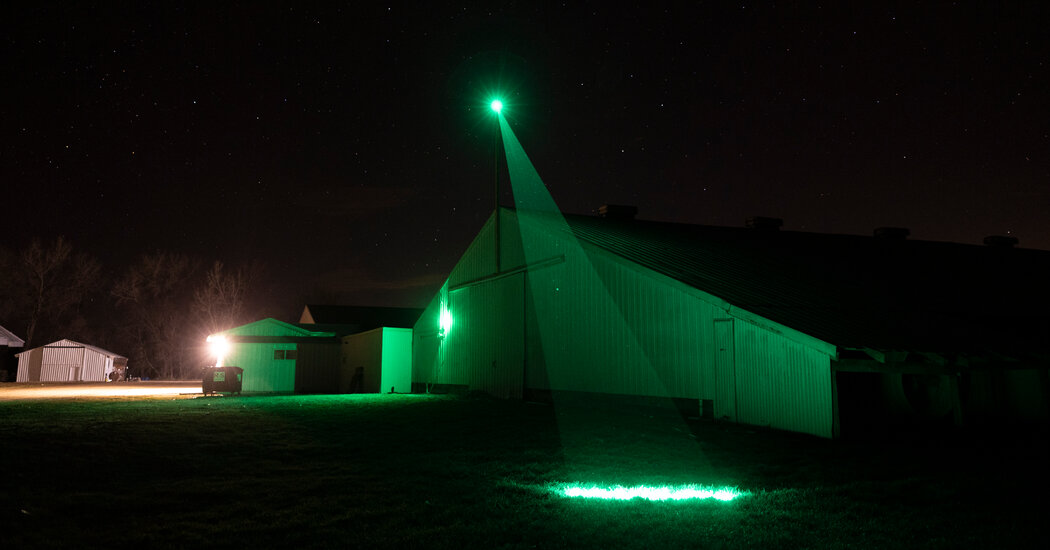Some poultry growers are turning to innovative tactics to protect their flocks, deploying deterrents like drones, air horns, balloons and decoy predators.
Loren Brey, a poultry grower in Minnesota, walked onto the farm where his egg-laying turkeys nest in November to discover a handful of hens, dead from the highly pathogenic avian flu.
Within a week, he lost nearly half of his entire flock.
So when Mr. Brey’s turkeys began producing eggs again in the spring, he gave a seemingly unconventional prevention method a go: lasers installed atop his barns, firing beams of green light to fend off wild ducks, owls and other possible carriers of the deadly virus.
As migratory birds fly north for the spring, poultry farmers and backyard keepers across the country are bracing for yet another outbreak of avian flu. Although the most recent strain has felled only a small portion of the nearly 10 billion chickens, turkeys, ducks and other birds sold across the country each year, some poultry growers like Mr. Brey are turning to innovative tactics to protect their flocks, deploying deterrents like drones, air horns, balloons and decoy predators.
The practices underline the scramble by smaller farms and even some larger-scale operations to ward off the virus, as well as the fatigue, and begrudging acceptance, of the illness after years of sanitation protocols, lockdowns and debates over vaccination.
The most affected appear to be large-scale industrial farms and those raising egg-producing chickens: two-thirds of the depopulated birds belong to just 30 farms with one million or more egg-laying hens. Turkey operations, like Mr. Brey’s, have also been hit hard, representing 350 of the 481 commercial farms with detected cases. The birds are particularly susceptible to infection, and are more exposed to the virus because many turkey farms sit within the migratory path for many wild waterfowl, said Dr. Carol Cardona, an expert in avian health at the University of Minnesota.
An infection carries vast consequences.
Under federal policy, one infected bird can necessitate the culling or elimination of an entire flock, and then disposing of the carcasses through composting, burial, incineration or rendering. The regulation has resulted in 90 million dead birds and more than 1,100 affected flocks across the country since February 2022, when the strain, the most lethal yet in the United States, was first detected.
